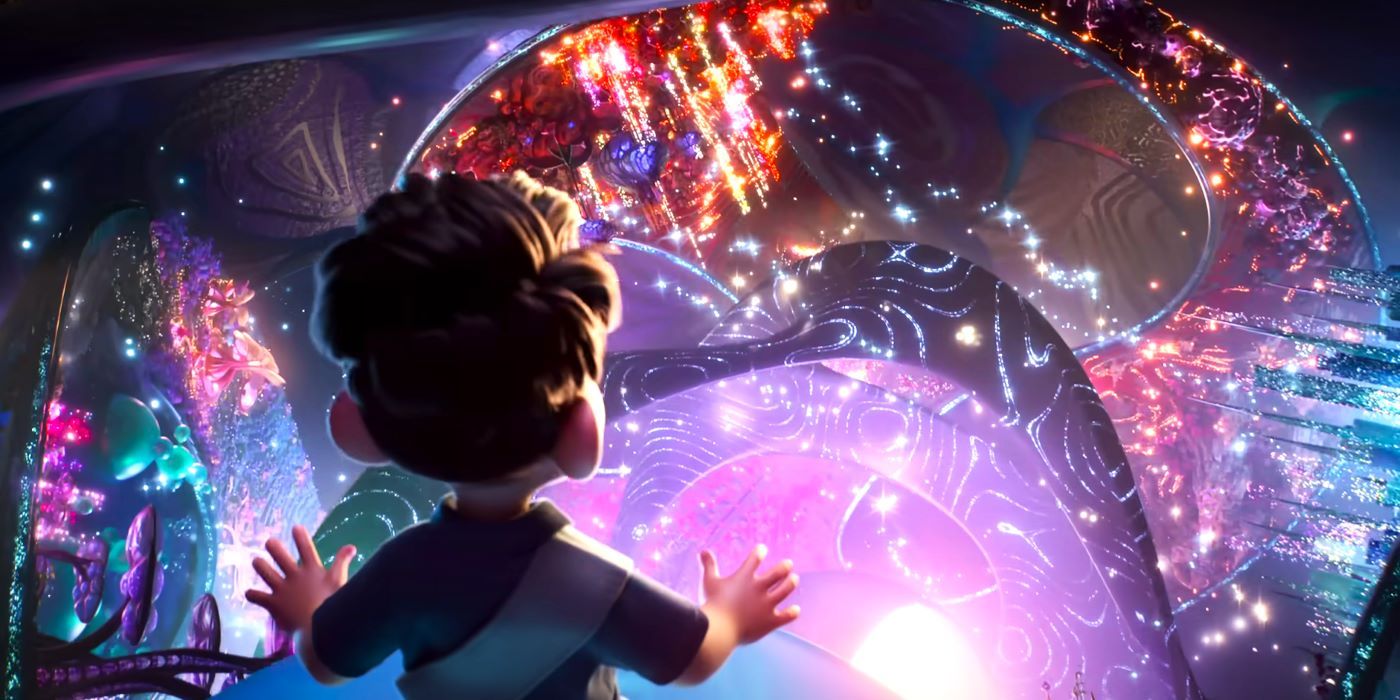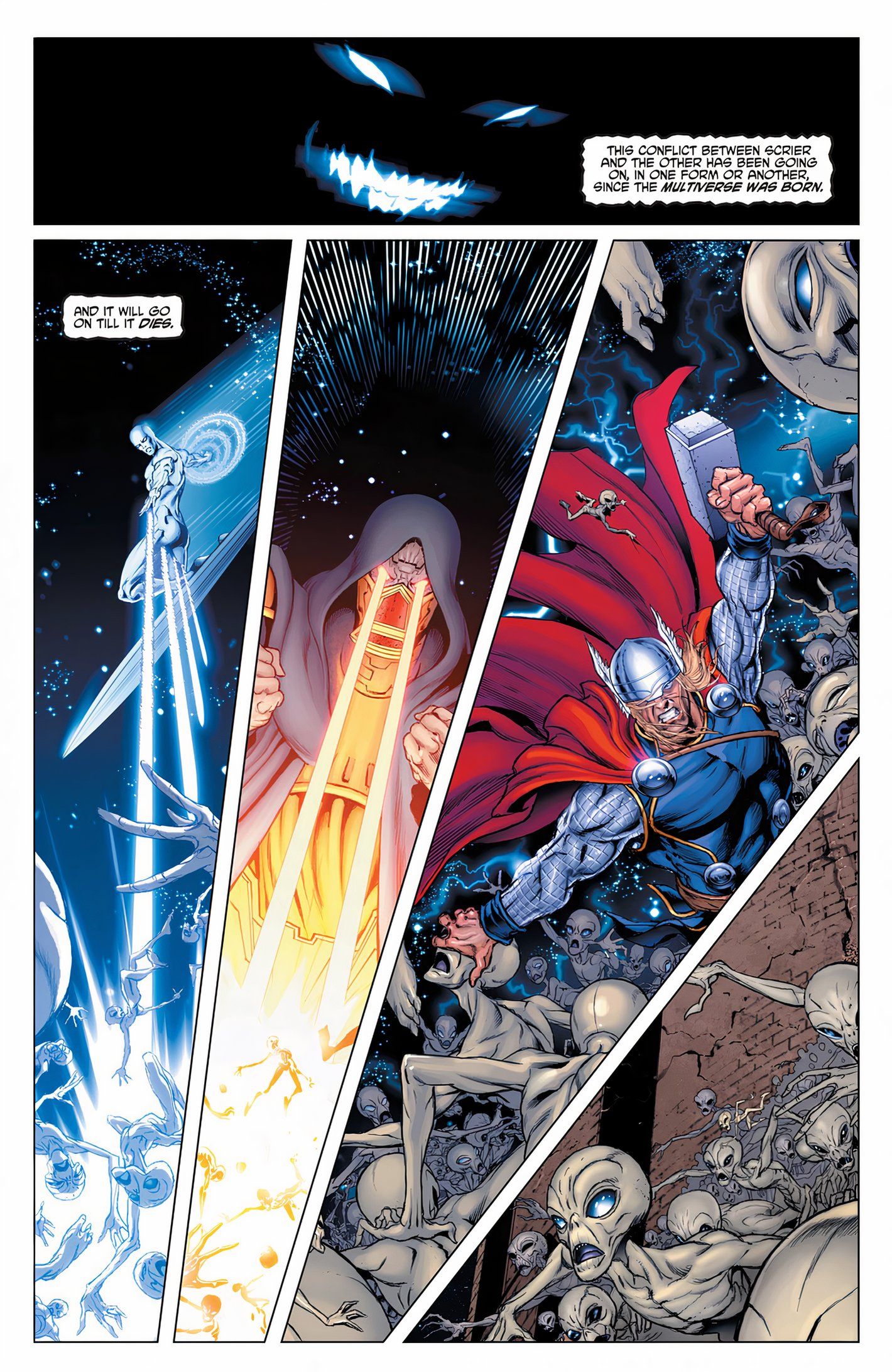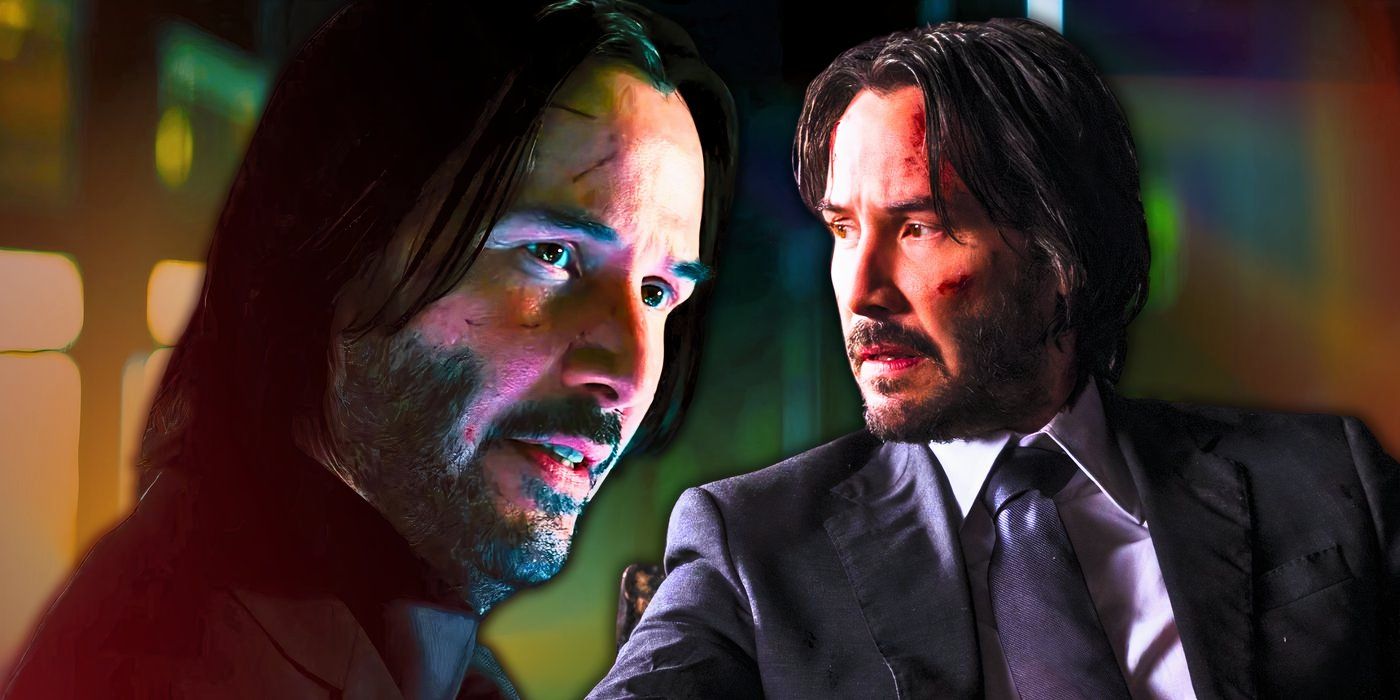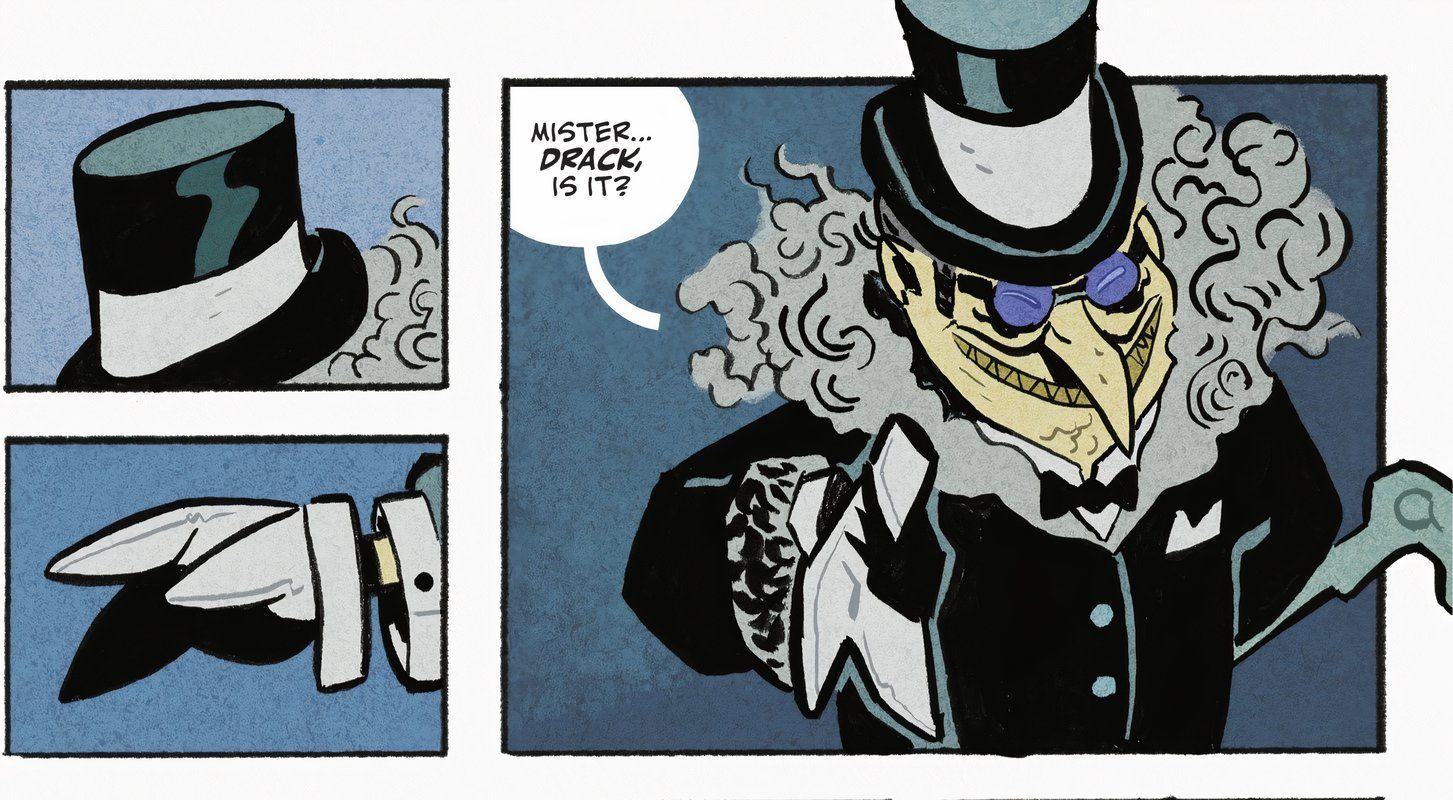The Arrowverse has been building towards “Crisis on Infinite Earths” for over four years. Crossover events have become an annual tradition for The CW’s slate of DC superheroes, but it seems “Elseworlds” was effectively a prelude for what’s coming next. When the story came to a close in Tuesday night’s episode of Supergirl, The CW revealed that 2019 would be the year of the “Crisis on Infinite Earths.”
The crossover events are always important, but this is the first time they’ve been announced a year in advance. It’s clear that “Crisis on Infinite Earths” isn’t intended to be a typical event; it’s something bigger, something with the potential to redefine the entire Arrowverse. That shouldn’t be a massive surprise, though; this event is inspired by one of the most important DC Comics plots of all time, a bestseller that ran from 1985 to 1986. What’s more, if you look back carefully through previous Arrowverse seasons, there are signs that “Crisis” has been coming to DCTV since at least 2014.
Related: When All Arrowverse Shows Return In 2019 (& What To Expect)
Here, we’re going to explain what “Crisis on Infinite Earths” really is, and explore the ways the Arrowverse has been building up towards next year’s event.
- This Page: The Flash Has Been Setting Up Crisis On Infinite Earths For Years
- Next Page: How “Elseworlds” Set Up Crisis On Infinite Earths
What Is Crisis On Infinite Earths?
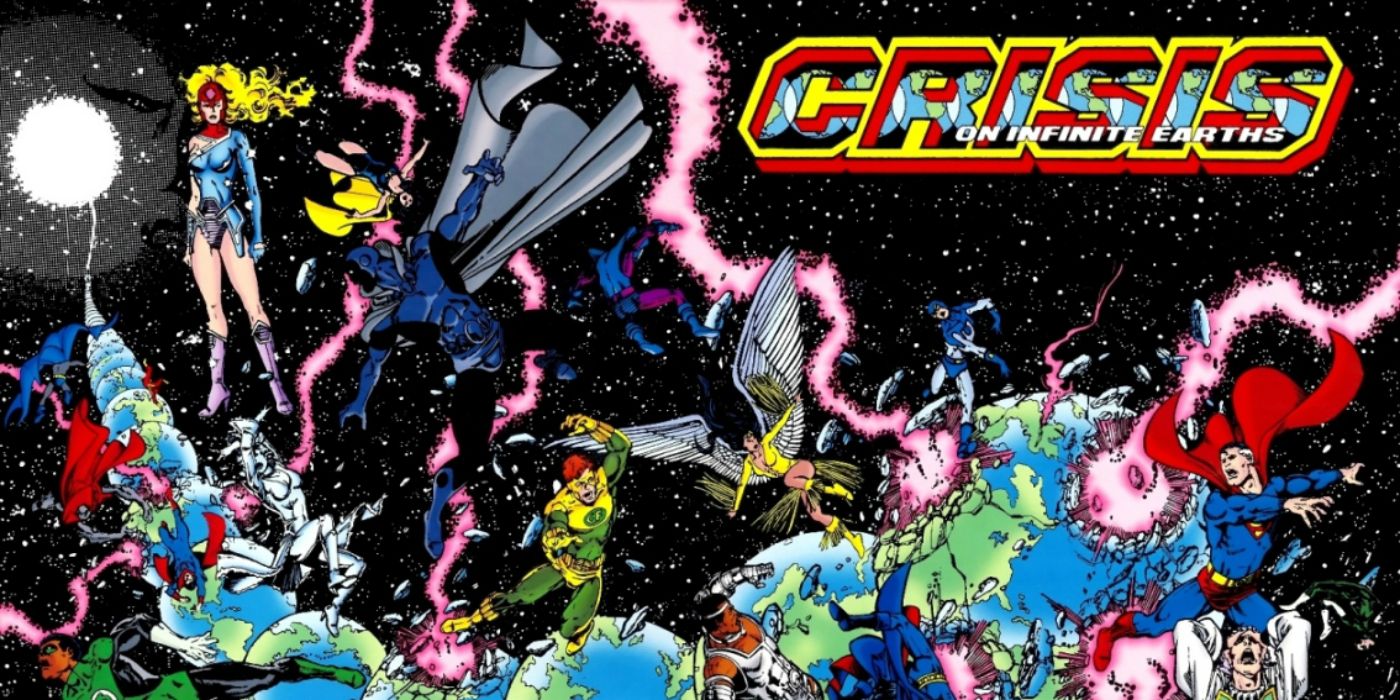
In the 1980s, writers and editors at DC Comics cast a critical eye over their entire comic book range. They realized that their continuity had become pretty messy, largely because the comics were set across a vast, sprawling multiverse of titles – and it was often unclear just which worlds events were happening on in the first place. It was impossible for even the writers to keep track of the continuity. Finally, writer Marv Wolfman hit upon the idea of simplifying matters by destroying the bulk of the multiverse, compressing it down to one single timeline. When he pitched the idea to DC Comics, Wolfman knew full well it would basically be a fresh beginning for the whole DC Comics range.
The Crisis on Infinite Earths 12-issue maxi-series became one of the defining books of the DC Comics publishing history. Written by Wolfman and with art by George Pérez, it featured every single hero in DC’s range; the story swiftly became infamous for its ruthless approach, with Wolfman killing off characters liberally. Although the series got almost no promotion, it proved to be a bestseller, and in hindsight it’s viewed as the turning point for DC. It was the first time in comic book history that literally everything – all of reality itself, every character and every franchise – was in danger.
The plot of Crisis on Infinite Earths was a chilling one, and the main antagonist was a cosmic being known as the Anti-Monitor. Exposed to anitmatter, the Anti-Monitor had begun destroying entire realities in order to absorb them into his own growing empire. He was opposed by the Monitor, who sought to guard the remainder of the multiverse from his opposite number, and both chose champions from across time and space; the Anti-Monitor’s most notable agent was a villain named the Psycho-Pirate. In the end, although the heroes emerged triumphant, it was at a terrible cost. Supergirl and Barry Allen’s Flash were among the most famous casualties of Crisis on Infinite Earths, giving their lives to save entire worlds. DC’s five main alternate dimensions were merged together, resulting in a brand new, simplified continuity. With the past rewritten, precious few heroes even remembered the pre-Crisis continuity.
Related: Elseworlds Crossover Suggests Flash Is Faster Than Superman
The Flash Has Been Setting Up Crisis For A Long Time
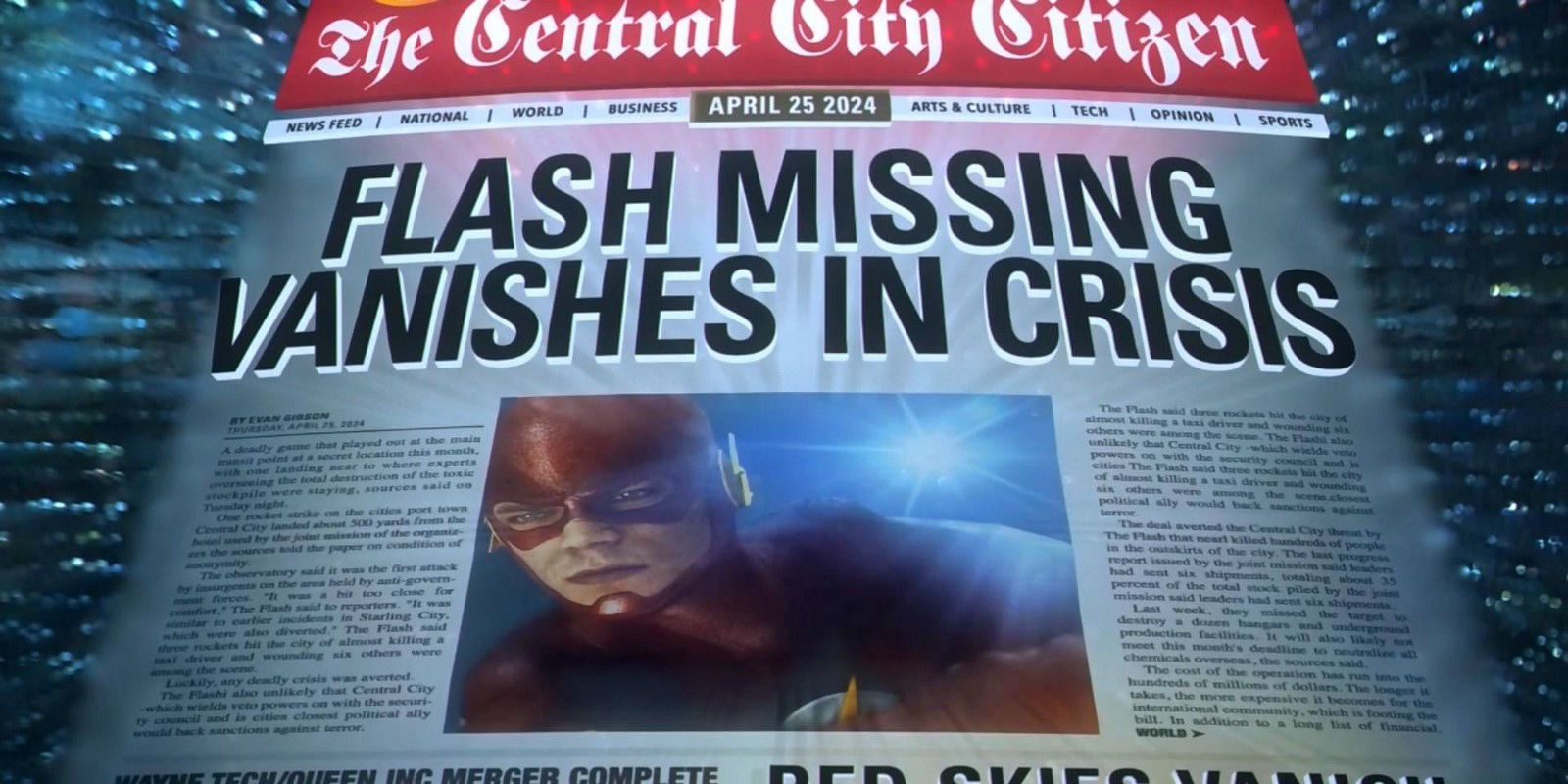
The Flash actually began setting up the DCTV version of Crisis all the way back in its pilot episode. Harrison Wells – a.k.a. the Reverse-Flash – possessed a secret Time Vault, and was seen contemplating a newspaper from 2024. The main headline read “Flash Missing, Vanishes in Crisis.” Beneath was a second, “Red Skies Vanish.” Both of these were allusions to Crisis on Infinite Earths, where the red skies were a sign of a reality’s imminent destruction, and Barry Allen sacrificed himself to prevent his world being consumed by antimatter.
Over the last few years, The Flash has gradually revealed what was written in the article. It described an apocalyptic scene in which the sky turned red, and power outages rippled across Central City. Starling City’s Green Arrow, the Atom, and Hawkgirl were on hand to help, as the Flash engaged in a destructive battle with the Reverse-Flash. It all ended in a blinding light followed by darkness as the night sky returned to black – and both Barry Allen and the Reverse-Flash were gone.
The premiere of The Flash season 5 revealed more details about the Crisis. Nora, the Flash’s daughter from the future, pulled up a second newspaper article about Barry’s disappearance. Dated 25 years after the Crisis, it included one significant paragraph:
“In the years following the crisis, accounts only grew more contradictory. Some eyewitnesses remember dozens of other heroes present, including Green Arrow, Batwoman, and Elongated Man. Others remember heroes thought lost in time, like The Atom, or from other worlds, like Supergirl. Some even contend they saw Reverse Flash leading an army of “shadow demons.””
Related: The Flash: Elongated Man Explained
This new information suggested that Crisis would be a crossover event featuring Supergirl and Batwoman. The mention of “shadow demons” is also important – in the comics, the Anti-Monitor sent Psycho-Pirate with an army of shadow demons. The article ended with a quote attributed to Psycho-Pirate himself, who claimed to remember the night’s events. “Worlds lived, worlds died,” he said, “Nothing will ever be the same.” That was the tagline for the Crisis on Infinite Earths comic book series back in 1985.
One final detail is worthy of note. In the season 4 premiere, Flash emerged from the Speed Force with his mind fragmented across time. He spoke a lot of words that seemed to be gibberish, but were either lifted from earlier episodes or proved to be linked to events yet to happen. “Nora shouldn’t be here,” Barry observed, pointing to his daughter’s arrival in the past. “Your honor, I’m innocent,” he objected, foretelling his day in court when he was accused of murder. But Barry also uttered a lot of strange words about stars falling from the sky, even melting “like ice cream.” Those words are yet to be fulfilled and could point to a cosmic event like the Crisis.
Page 2 of 2: How “Elseworlds” Set Up Crisis on Infinite Earths
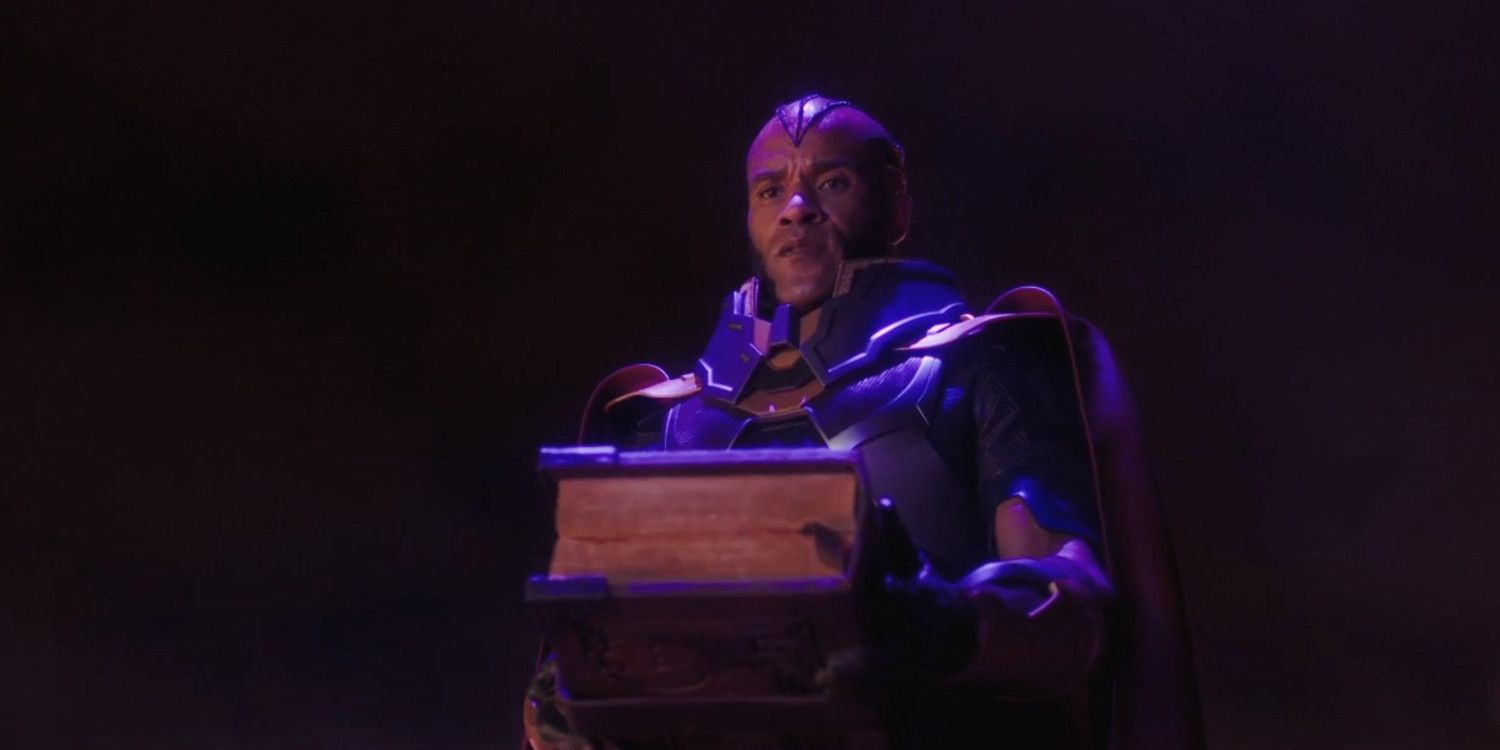
“Elseworlds” Was Direct Setup For Crisis
Based on the evidence of The Flash, then, it looked as though the DCTV Crisis shouldn’t happen for another six years. But it’s important to remember that the timeline is malleable and that the Flash typically changes it quite a lot. Barry Allen’s disappearance has, up till now, appeared to be fixed; but there’s no reason this event couldn’t be brought forward should the timeline change. Indeed, that’s what appears to be happening; this year’s “Elseworlds” event was basically setup for next year’s “Crisis on Infinite Earths.”
It introduced the Monitor, a cosmic being who was convinced a terrifying threat was approaching. The Monitor was using the Book of Destiny to test entire worlds, apparently destroying them if they failed, seeking champions who would be able to fight against a coming darkness. Importantly, he even used the word “Crisis.” The story significantly rewrote the Arrowverse’s concept of the multiverse, revealing that there aren’t just 52 different realities out there after all; it featured a brief glimpse of the doomed Earth-90. This clearly hinted towards the idea that there could be any number of different dimensions out there – indeed, there could perhaps be “Infinite Earths.”
Related: Elseworlds: 7 Unanswered Questions After This Year’s Arrowverse Crossover
Finally, the story also featured the debut of the Arrowverse’s version of Psycho-Pirate, an Arkham Asylum inmate who became instant friends with Doctor Deegan. “Don’t worry, Doctor,” he assured Deegan. “Everything is as it should be. The stage is set. Worlds will live. Worlds will die. And the universe will never be the same.” It’s no coincidence that this was the closing comment in “Elseworlds,” followed by the revelation that the “Crisis on Infinite Earths” event would come in fall 2019.
Oliver Queen Will Play A Key Role
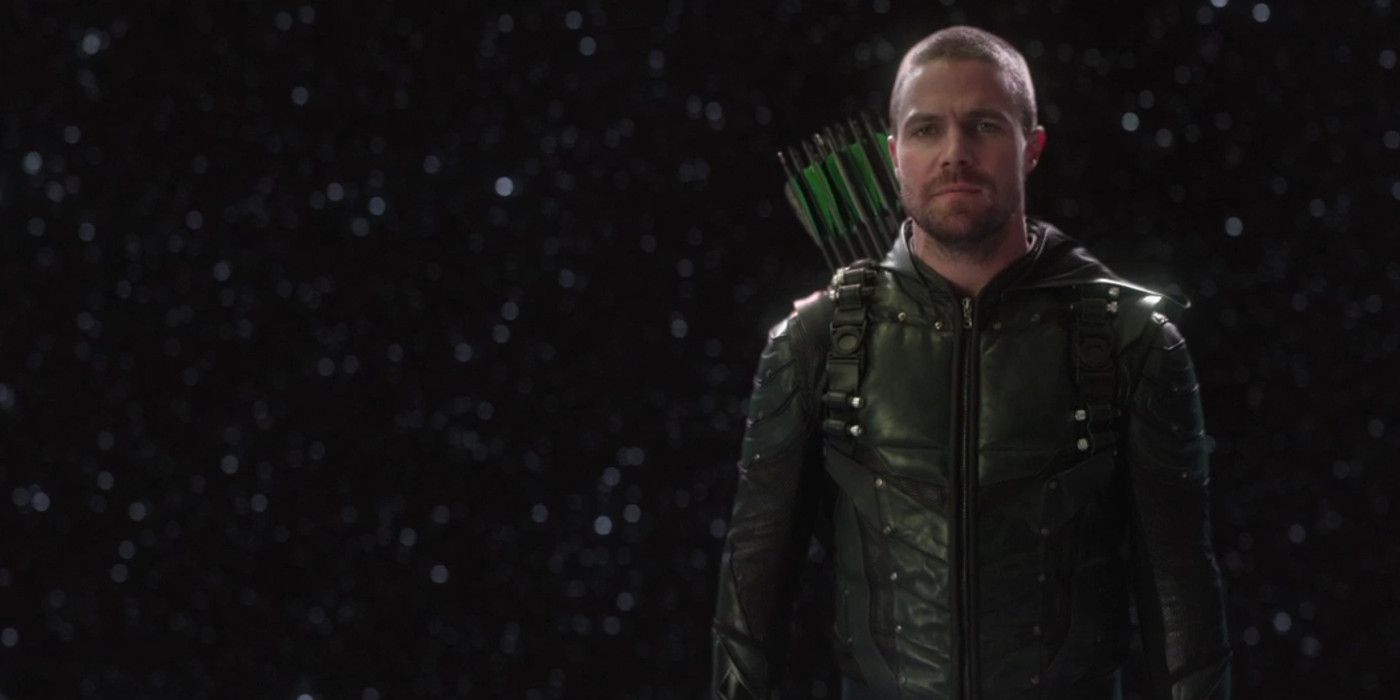
Of course, the Arrowverse has always tended to heavily adapt classic comic book plots in order to focus in upon its stars. Green Arrow wasn’t a major part of Wolfman’s Crisis on Infinite Earths, but “Elseworlds” positioned Oliver to be particularly important in the Arrowverse version. To the Monitor’s surprise, Green Arrow had the nerve to seek him out and confront him. Oliver struck some bargain with the Monitor; it saw the Monitor agree to rewrite Flash and Supergirl’s destinies, allowing them to survive using their powers to slow down time. But the Monitor stressed there’s a need for some sort of universal balance, meaning Oliver must have agreed to pay some kind of price for this.
Right now, it’s difficult to say what that price may be. When Barry and Oliver shared a toast at the end of “Elseworlds,” Green Arrow seemed pretty confident that his time would come to an end. And yet, this comment was balanced out by his belief that Barry’s example was guiding him down a path towards truly becoming a hero. Although Oliver insisted he isn’t a good man yet, he added that “I think I’ll get there someday.” That suggests a degree of confidence in his own fate that’s frankly pretty unusual for Oliver Queen.
Nora May Be From A Post-Crisis Universe
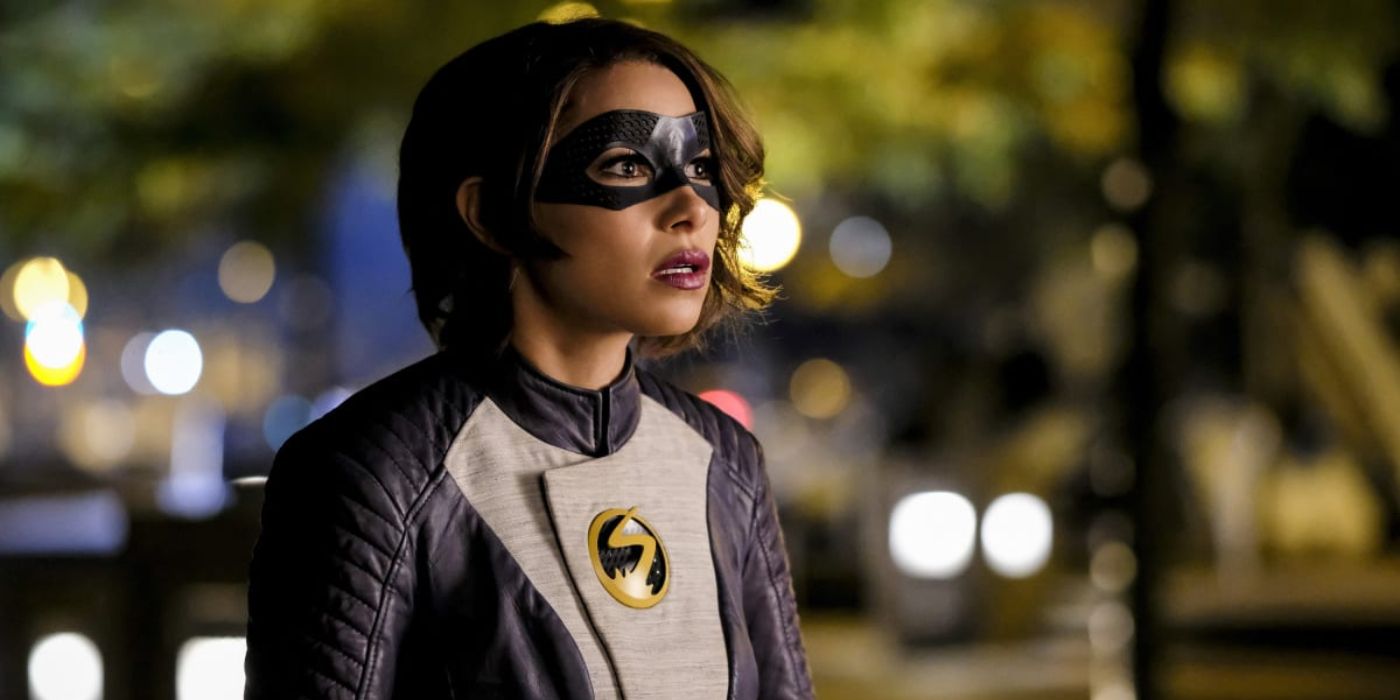
The Arrowverse shows currently take place over two different realities. That may well change in the aftermath of the Crisis; there’s already a lot of speculation this could be how the Arrowverse simplifies its own continuity, incorporating Supergirl into the main Arrowverse and clearing the way for any number of team-ups. Interestingly, The Flash season 5 has dropped subtle hints that this may well be the case. It’s featured Nora West-Allen, a.k.a. XS, a character who seems to originate from a post-Crisis universe. Nora has matter-of-factly referred to Supergirl and “the League” – clearly the Justice League – hunting for Cicada in her timeline. More recently, Gideon said that XS would become a member of “the Legion.” That’s a reference to the Legion of Super Heroes; in fact, in the comics, XS was indeed a member of that team. But the Legion, of course, exist in Supergirl’s reality. So far, then, the little that’s been confirmed about Nora’s time and ultimate fate strongly suggests the realities will combine. That’s most likely a result of the Arrowverse‘s 2019 event, “Crisis on Infinite Earths.”
Related: Supergirl Can Join The (Real) Arrowverse In 2019
It’s interesting to speculate that, post-Crisis, “Elseworlds” could have even more significance. The first episode of the crossover saw a number of key heroes unite in battle against the android A.M.A.Z.O., who’s traditionally a Justice League villain. If reality merges, then it would be far easier for the heroes to work together – perhaps even begin to call themselves the Justice League. That would fit with Nora’s timeline, and it would retroactively mean the battle against A.M.A.Z.O. was the first real time the Justice League teamed up against a single threat.
